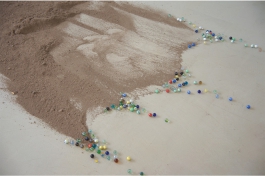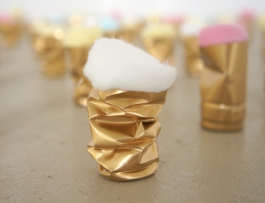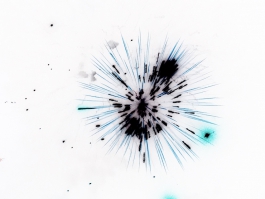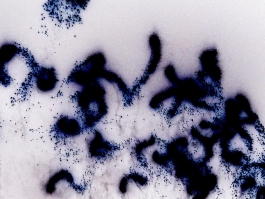


Stefan Milosavljevic
The artistic practice of Stefan Milosavljevic (1992) develops from a reflection on contemporary society and on the relational dynamics between the human being and the elements that characterize his sensory experience. His interest originates from the fascination with the history of certain objects or events and from the desire to discover their origin and their evolution over time. Through an investigation that reveals their historical memory, his attention turns to the process that from creation led to their exclusion from the sphere of profit. In his sculptural installations Milosavljevic uses found materials that for some reason were once strongly desired and then abandoned, devalued, discarded because considered superfluous or useless. Alternatively, they are elements that evoke traumatic events which one wishes to leave behind. By rescuing and reassembling such materials, the artist creates forced relationship that could never have existed without his intervention, giving them a new identity. Different combinations of ready-made objects are carried out through the process of inclusion of the excluded, the discarded, the removed. Waste thus becomes an aesthetic product subject to infinite renegotiations, the signification of which is intentionally arbitrary, uncertain and ambiguous.

'Unexpressed potential', 2017 , ash, glass balls, dimensions determined by the space

'The sweet sound of Ah', 2018, wool and cotton fibers, dimensions determined by space

'Rose Garden', 2017, wine cap paper, cotton makeup remover 100 pieces, 150 x 150 cm

'Dark times' 2017, digital color photography, print on hahnemuhle paper, 36x29 cm

'Dark times' 2017, digital color photography, print on hahnemuhle paper, 36x29 cm

'Interrupted Rainbow', 2020, Testosterone and markers on paper, 42x59,4 cm
Stefan Milosavljevic
The artistic practice of Stefan Milosavljevic (1992) develops from a reflection on contemporary society and on the relational dynamics between the human being and the elements that characterize his sensory experience. His interest originates from the fascination with the history of certain objects or events and from the desire to discover their origin and their evolution over time. Through an investigation that reveals their historical memory, his attention turns to the process that from creation led to their exclusion from the sphere of profit. In his sculptural installations Milosavljevic uses found materials that for some reason were once strongly desired and then abandoned, devalued, discarded because considered superfluous or useless. Alternatively, they are elements that evoke traumatic events which one wishes to leave behind. By rescuing and reassembling such materials, the artist creates forced relationship that could never have existed without his intervention, giving them a new identity. Different combinations of ready-made objects are carried out through the process of inclusion of the excluded, the discarded, the removed. Waste thus becomes an aesthetic product subject to infinite renegotiations, the signification of which is intentionally arbitrary, uncertain and ambiguous.

'Unexpressed potential', 2017 , ash, glass balls, dimensions determined by the space

'The sweet sound of Ah', 2018, wool and cotton fibers, dimensions determined by space

'Rose Garden', 2017, wine cap paper, cotton makeup remover 100 pieces, 150 x 150 cm

'Dark times' 2017, digital color photography, print on hahnemuhle paper, 36x29 cm

'Dark times' 2017, digital color photography, print on hahnemuhle paper, 36x29 cm

'Interrupted Rainbow', 2020, Testosterone and markers on paper, 42x59,4 cm